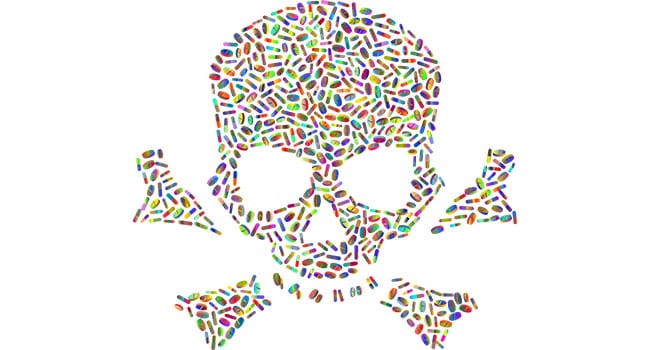By Daniel Duarte
Research Associate
Frontier Centre for Public Policy
Over the last decade, Canada has been among the top three countries with the highest per capita opioid consumption. With 3,023 opioid-related deaths in 2016, 4,120 in 2017, and 4,588 in 2018, the problem appears to be escalating quickly despite numerous federal and provincial initiatives.
The available evidence suggests the most effective course of action is to reduce opioid prescriptions and eventually the supply. One promising alternative Canada is particularly well suited to explore is substituting medical marijuana.
A study released in October, authored by clinician-scientist at Toronto’s St. Michael’s Hospital Dr, Karim Ladha, found Canadian and U.S. doctors disproportionately prescribe opioid drugs for patients after minor surgeries. Their rates are seven times higher, for example, than in Sweden.
“Surgery represents one of the most common reasons why someone is first exposed to opioids,” Ladha explains. He asks if they’re necessary for post-operative pain management.
Instead, some physicians have begun prescribing medicinal cannabis to treat pain, anxiety, insomnia and other symptoms. With minimal unwanted side effects, cannabis patients have reported these products provide the same sought-after outcomes as other pain relievers.
Two studies published in JAMA Internal Medicine, conducted over the last five years, found that – in the U.S. states where marijuana is legal – opioid prescriptions and deaths from opioid overdoses have decreased. As awareness continues to rise, more opioid patients are turning to cannabis alternatives.
Tracking a similar trend, the Canadian Institute for Health Information reports the number of opioid prescriptions in the nation has fallen since 2012. The decline was particularly significant between 2016 and 2017. Opioids dispensed, measured by the defined daily doses per thousand people, dropped by 10.1 per cent in that year.
During the same period, however, hospitalization due to opioid poisoning increased by eight per cent in Canada, with an average of 17 confinements per day. The fastest-growing rates of hospitalization are men aged 25 to 44, with a 30 per cent increase between 2016 and 2017.
Fentanyl and other fentanyl-related substances, often used as recreational drugs and sold on the black market, have been a major driver of the crisis, according to the Public Health Agency of Canada. From January to March 2019, 82 per cent of opioid-related deaths involved fentanyl, and 74 per cent involved one or more types of non-opioid substances.
The federal government announced in 2017 an investment of $100 million over the next five years to address the opioid epidemic. Under the Canadian Drugs and Substances Strategy (CDSS), officials have identified trends and best practices to address substance abuse.
Then in July 2019, Health Minister Ginette Petitpas Taylor increased the budget by $76.2 million to tackle the illegal supply and consumption in underserved communities. One salient point is that this is not just a big-city problem; many mid-sized Canadian cities and Indigenous groups also struggle with it.
Some researchers have suggested marijuana might be a gateway drug to opioids since cannabis use usually precedes other harder substances. However, there is no conclusive evidence of a causal link. It’s a chicken-and-egg conundrum.
Those already inclined to drug-taking can start with alcohol and nicotine, two more readily available substances that have the same gateway effect on the human brain. Public Health Ontario argues the transition to harder drugs hinges on environmental variables: childhood experiences, social influences, life expectations and parental use.
In any case, opioids don’t need a stepping stone. One has a hard time understating how easily anyone can get hooked on them legally: many addicts have no prior drug abuse and are just in treatment for chronic pain or anxiety. When they can no longer get prescriptions, they turn to illegal alternatives that are often laced with deadly contaminants.
New evidence suggests the opposite may be true about marijuana: it could be an exit drug for opioid addiction. Treatment with the non-psychoactive component of cannabis (CBD) has successfully tackled opioid addiction in patients by regulating fear and anxiety. Organizations such as the High Hopes Foundation in Vancouver are launching cannabis-substitution programs where drug users get free and surveilled access to marijuana products.
Cannabis has been legal in Canada for medicinal purposes since 2001, and a year ago the federal government made its recreational use legal. This promising industry is just beginning to bloom, but it still struggles with red-tape bottlenecks.
Production licensing is slow in many provinces. With significant black market competition, investing in the cannabis industry is still a risk.
The federal government should support the provinces in facilitating licensing. If the right policies encourage innovation in the cannabis market, it could become a path out of the opioid crisis.
Daniel Duarte is a research associate with the Frontier Centre for Public Policy. Paz Gómez contributed to this article.
Daniel is a Troy Media Thought Leader. Why aren’t you?
The views, opinions and positions expressed by columnists and contributors are the author’s alone. They do not inherently or expressly reflect the views, opinions and/or positions of our publication.


